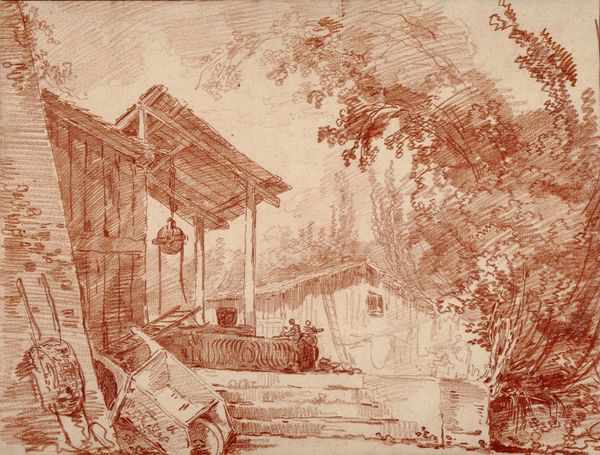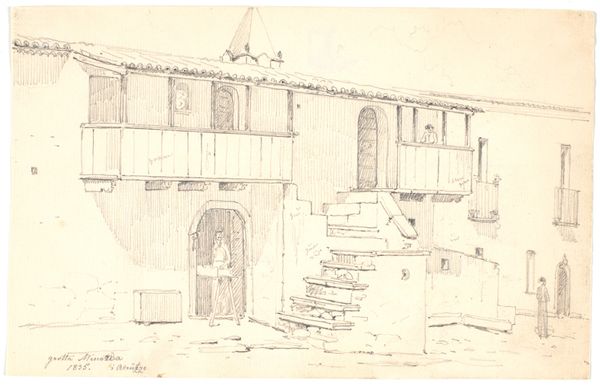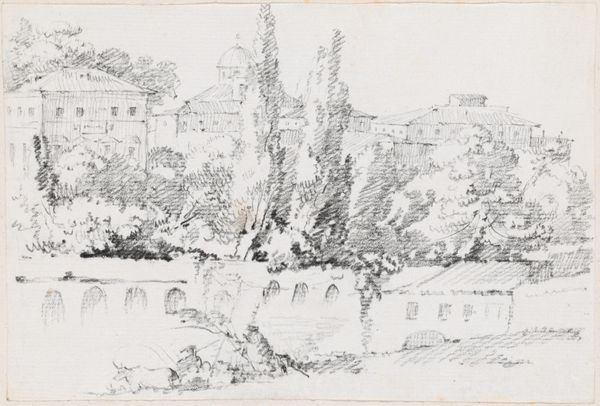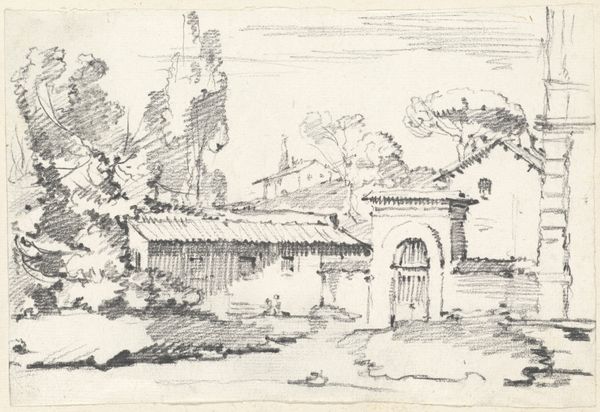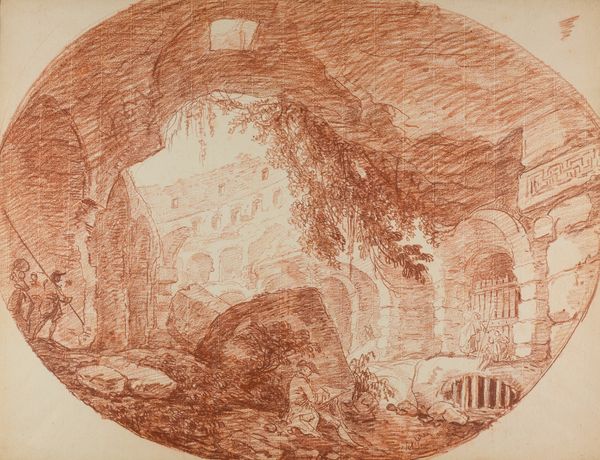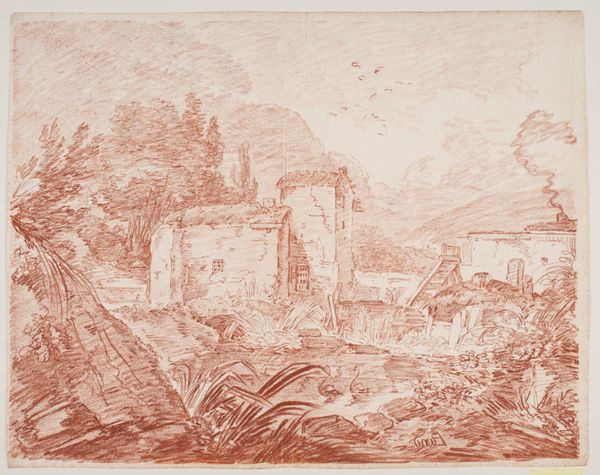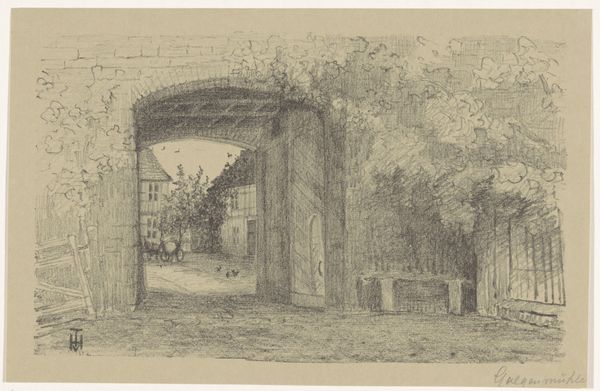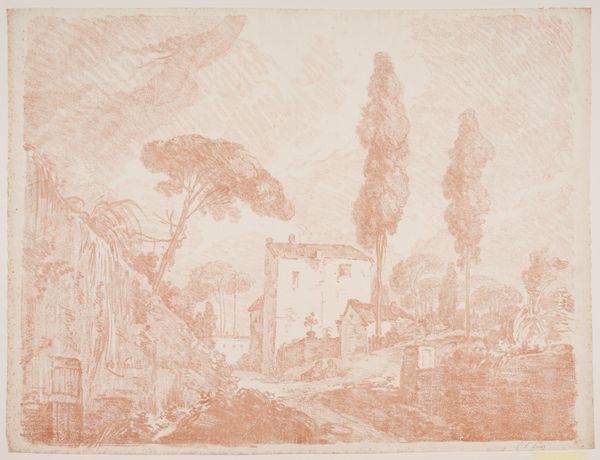
Copyright: Public Domain: Artvee
Jean-Honoré Fragonard rendered this sanguine drawing of Roman ruins, likely from life. At center stands a solitary figure, posed atop the crumbling edifice. The ruin is a potent symbol, one that transcends time and place. It evokes a sense of melancholy and the transience of human achievement. It is a memento mori, reminding us of our mortality. Think of the Colosseum: the ruin of Roman power became a sacred site, a pilgrimage destination. Fragonard, consciously or unconsciously, taps into this collective memory. The overgrown vegetation adds another layer, symbolizing nature's relentless reclamation of human constructs, a theme we find echoed in paintings of the Romantic era, often associated with a sense of sublime awe. As we contemplate this image, we're reminded of the cyclical nature of history, of the rise and fall, and of the enduring power of ruins to evoke profound emotions.
Comments
No comments
Be the first to comment and join the conversation on the ultimate creative platform.
